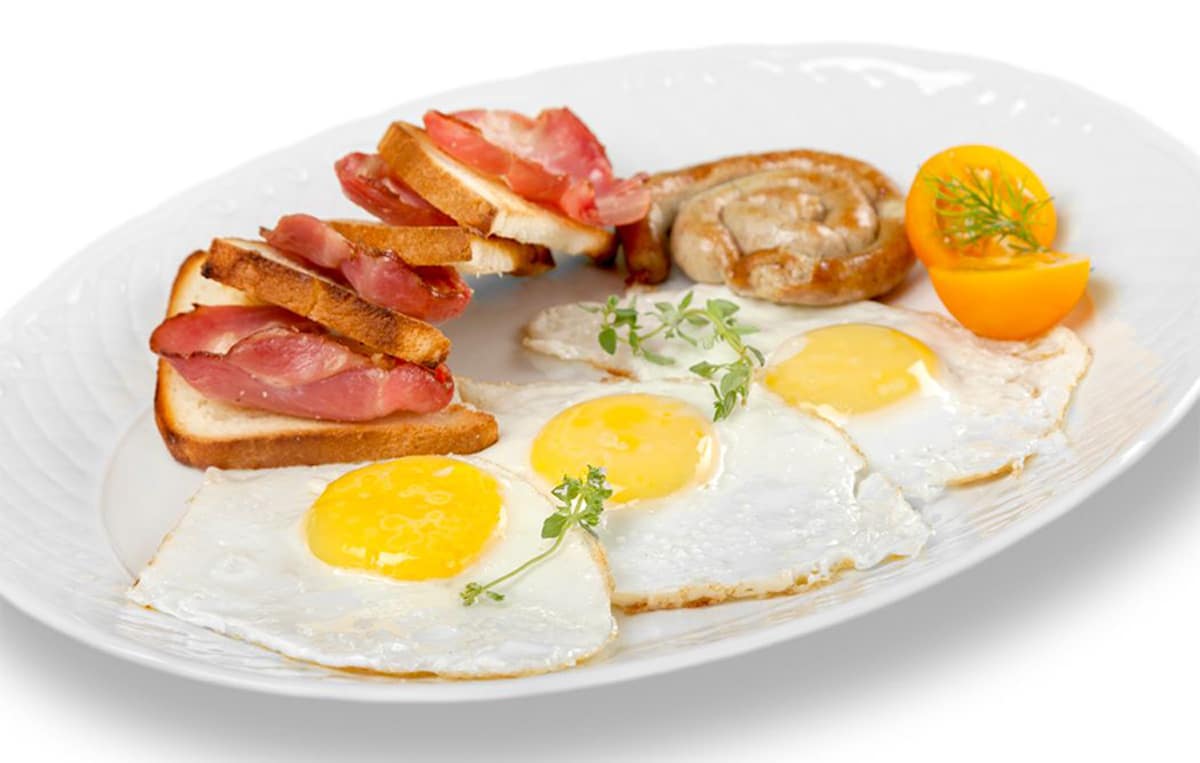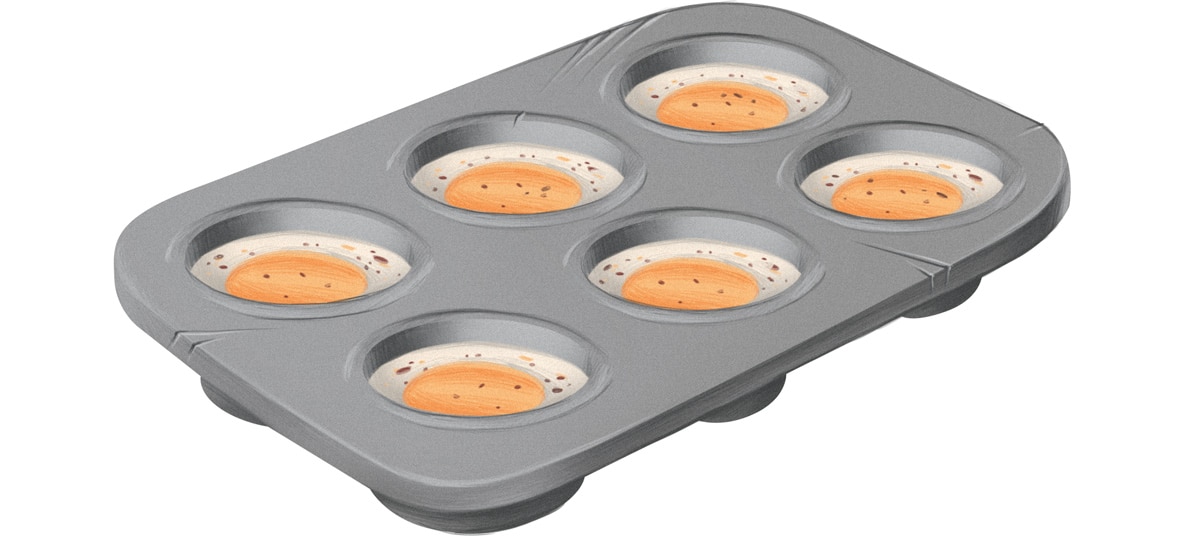
Breakfast is one of the biggest challenges that people struggle with when they go Paleo – no oatmeal? No granola? No toast?
Nope, and there’s a good reason for that: none of those set you up for success later in the day.
The Anatomy of the Standard American Breakfast
If you think of typical American breakfast foods, most of the weekday options fall into two categories: coffee and carbs. Most people save the sausages, bacon, and eggs for the weekend when they “have time to cook;” on their way out the door on Tuesday, they’re grabbing a travel mug and a bagel to eat in the car.
First, you’ve got your coffee – or, for the Starbucks crowd, your triple-shot grande skinny vanilla latte. Then you’ve got your carbs – almost all the typical workday breakfast options are basically refined carbs with nothing else, or maybe a little bit of fat on top if you’re having a bagel with cream cheese or toast with peanut butter. Donuts, croissants, scones, granola (yes, even “high-protein” granola; read the Nutrition Facts label and find out how little protein it really has!), oatmeal, breakfast cereal…it’s a giant carb-fest, and you’re invited.
The coffee + carb combo isn’t accidental. Here’s why it’s so popular.
- The coffee wakes you up after a night of (probably) inadequate sleep.
- The refined carbs give you a fast blood sugar high for an extra energy and mood boost. Of course, you’ll be hungry again two hours later when you come crashing down from that high, but that’s what 10:00 snacks are for, right?
It’s like an energy drink, in food form. And just like an energy drink, it sets you up for a lovely ride on the blood sugar roller coaster for the rest of the day. Think mood swings, sugar cravings, energy highs and lows, weird crashes…it’s not a great way to live.
Breakfast: The Paleo Solution
On Paleo, the goal of breakfast is basically the opposite of that. Instead of setting you up to have blood sugar swings, a Palo breakfast is designed to give you stable and long-lasting energy from protein and fat to keep you going strong until lunch. Coffee is still allowed if you need it, but you might find that you don’t, once you’re sleeping properly.
So what does that look like? Here’s the anatomy of a Paleo breakfast.
- Protein: eggs, meat, fish, or yogurt (if you tolerate dairy; not everyone does)
- Healthy fat: healthy Paleo oils, avocado, olives, or fatty meats like bacon.
- Vegetables: yes, vegetables at breakfast. It’s not like they only become nutritious after noon. You can have fruit in addition to your vegetables, but it’s not a replacement for them.
You can eat foods you want, as long as they you with protein, fat, and vegetables. You do not have to eat “breakfast foods” at breakfast. This is the most important lesson a beginner can learn about Paleo breakfasts. Yes, you’re used to eating certain foods to start the day, but that doesn’t mean you have to do it like that. You’re adaptable: if you do it differently, then the new way will become “normal” very fast.
There’s absolutely no reason why breakfast should look any different from any other meal, except that food companies are really invested in selling you $5 bags of food-colored sugar under the title of “breakfast cereal” to convince you that breakfast requires some kind of special type of food.
This is a pretty dramatic change; it’s totally understandable if you want to start off with omelets and other traditional breakfast foods for the first few weeks. But then branch out: you might discover something you really love and never would have tried otherwise!
Paleo Breakfast: Q & A
And now for the “OK, but…” section!
But who has time to cook every day in the morning?

You don’t have to cook every day in the morning! Fix up a big batch of make-ahead breakfasts (here are 8 recipes to start you off) on the weekends and grab something out of the fridge to go every day. It’s just as convenient to grab an egg muffin as it is to grab a regular muffin, only the egg version will actually do your health some good.
But I can’t eat/don’t like eggs. What do I do?
Eat any other source of animal protein you like. There’s no rule that you must eat eggs for breakfast.
But what about…
- Smoothies? Not usually the best choice, since they’re pretty low in protein.
- Nuts, Paleo “granola,” homemade energy bars, etc.? Also not the best choice; nuts are not a good source of protein for a meal (really: look up the nutrition facts!), and very easy to overeat.
- Paleo “pancakes,” “muffins,” “bagels,” etc.: they’re fine for treats, but don’t make them part of the daily rotation. They’re typically low in protein and high in sugar, which is exactly what you’re trying to avoid.
A good principle is to not try to re-create junk food with technically-Paleo ingredients. That might be squeaking in on a technicality, but it’s violating the spirit of Paleo. Just bite the bullet and get used to eating protein, fat, and vegetables for breakfast without trying to disguise it as carb-based junk.
But what if I don’t like eating breakfast at all?
That’s totally fine. It’s called intermittent fasting, and it may actually have some health benefits if it works for you. If you’re a breakfast-skipper by nature and just don’t get hungry until later in the day, there’s no reason to force yourself to eat.
On the other hand, if you do get hungry in the morning, eat something! Don’t force yourself to fast, and don’t skip breakfast in an effort to cut calories or because you feel guilty about how much you ate the day before. Today is a new day; start over by giving yourself the fuel you need to avoid another cycle of cravings later in the afternoon.
Summing it Up
Breakfast is one of the biggest struggles for Paleo beginners, but it’s also one of the most important meals, because it can set you up for a great day or a tough one. If you’re eating Paleo, you can either eat a healthy breakfast (protein, fat, and vegetables, just like every other meal) or skip it if you prefer. Limit Paleo imitations of pancakes, granola, muffins, and other junk food – they’re nice for treats, but nutritionally they aren’t great.
It’s a change, but if you dive in headfirst, you’ll get used to it very quickly and Paleo breakfast will become the new “normal,” and it won’t take any more effort than grabbing a muffin as you run out the door.





Leave a Reply